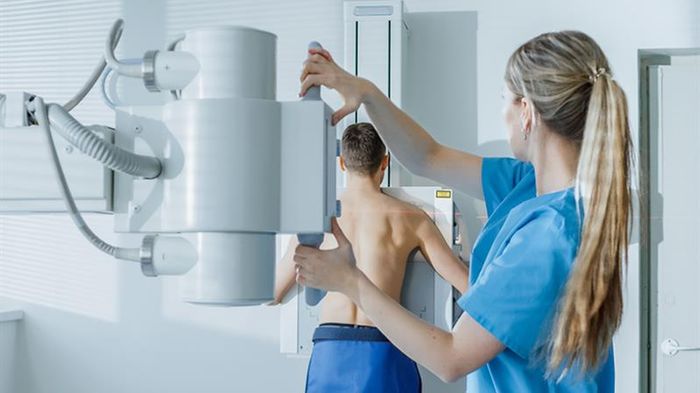 When experiencing chest pain, many people wonder if they have had a heart attack.
When experiencing chest pain, many people wonder if they have had a heart attack.
While it is important to get checked out by a healthcare professional, in many cases, the cause of the chest pain is not related to the heart. One such procedure that may be used to determine the cause of chest pain is an XRay. An XRay can help identify problems with the lungs, ribs, and other organs in the chest area. We’ve collaborated with Mermaid Beach Radiology to discuss what to expect during a chest X-ray and how this procedure can aid in diagnosing other conditions.
How Is a Chest X-ray Performed?
A chest x-ray is a non-invasive test that produces images of the structures inside your chest, including your heart, lungs, and blood vessels. This is performed by a radiologist, a doctor specializing in using x-rays to diagnose and treat diseases. Before the x-ray is taken, the professional will ask you to remove any jewelry or other objects that could interfere with the images. Your doctor will also ask you to stand in front of the x-ray machine and hold very still while the radiologist takes the pictures. The x-ray itself only takes a few seconds, and the entire procedure usually takes less than 15 minutes.
What Can a Chest X-ray Show?
A chest x-ray can help doctors diagnose conditions like pneumonia, lung cancer, and congestive heart failure. The x-ray can also show whether there is fluid in the lungs or around the heart. In some cases, you may use a chest X-ray to check for foreign objects, such as a piece of broken bone or metal.
These days, chest x-rays are not as common as they once were. This is because newer tests, such as computed tomography (CT) scans and magnetic resonance imaging (MRI) scans, can give more detailed information about the structures in the chest. However, chest x-rays are still considered an important tool for diagnosing certain conditions.
What Are the Dangers of a Chest X-Ray?
Patients often undergo chest x-rays as part of a routine health screening or when they experience symptoms like coughing or shortness of breath. While this diagnostic tool can provide valuable information about the lungs, it also comes with some risks. One of the most common side effects of a chest x-ray is radiation exposure. It can increase the risk of developing cancer.
However, the risk is very low for individuals who only undergo occasional x-rays. Another potential risk is an allergic reaction to the contrast material that is used in some x-rays. In rare cases, this reaction can be severe and even life-threatening. Finally, there is a small risk that the x-ray could result in a collapsed lung. This complication is more likely to occur in patients with lung disease. Overall, chest x-rays are generally safe and well tolerated. Still, it is important to know the potential risks before undergoing this procedure.
How Can You Prepare for a Chest X-ray?
If you are scheduled for a chest x-ray, you can do a few things to prepare for the test. Here are a few tips:
- Wear comfortable clothing
- You will remove your clothing and wear a gown during the x-ray, so it is important to wear comfortable clothing that is easy to remove.
- Don’t Wear Jewelry or Accessories
- You will need to remove any jewelry or accessories before the x-ray, so it is best to leave these items at home.
- Pregnant women should notify their doctor
Usually, chest x-rays are safe for pregnant women, but it is important to notify your doctor if you are pregnant or think you may be pregnant. Sometimes, your doctor may recommend an alternative test, such as an ultrasound.
What Happens After a Chest X-ray?
After the x-ray is complete, you can put your clothes back on and return to your normal activities.
The radiologist will help to interpret the images and send a report to your doctor. Your doctor will then discuss the results with you and explain what they mean concerning your health.
A chest x-ray is a painless, quick, and effective way to get information about the lungs and other structures in the chest. While some risks are associated with this procedure, they are usually very mild and rare.
So, if you are experiencing any chest pain or other symptoms that might warrant a chest x-ray, don’t hesitate to talk to your doctor. This diagnostic tool can provide valuable information about your health and could potentially save your life.
Have you ever had a chest x-ray? What was your experience like? Let us know in the comments below.
Leave a Reply